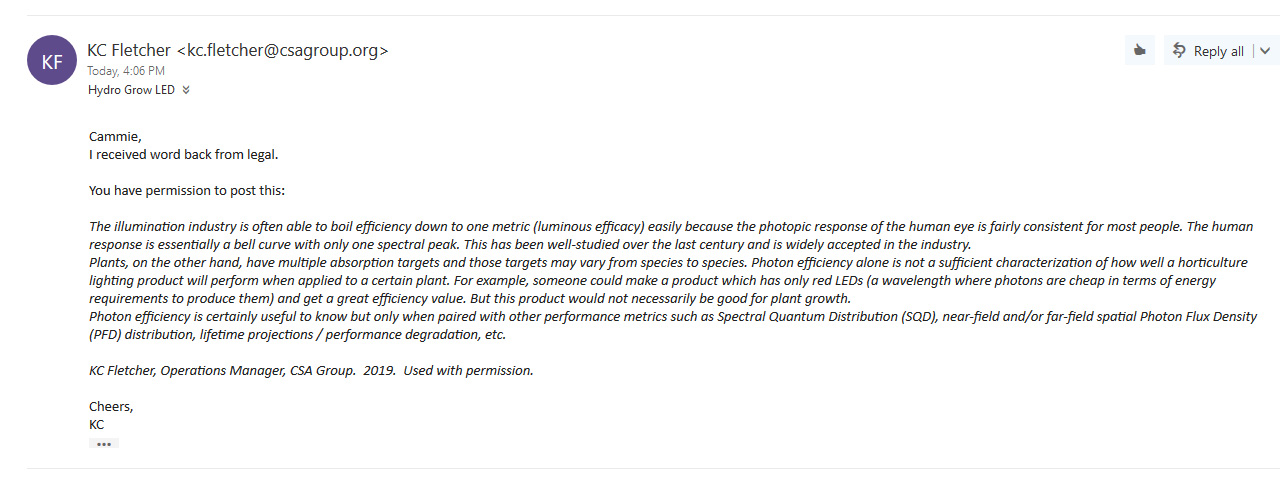HydroGrowLED
Well-Known Member
There are a lot of members here who seem to distrust when I say that umol/joule is not a good indicator of how well a light can grow plants. Various members here have demanded I have my lights tested for these figures and recommended me to a company called CSA Group to do so. I have contacted CSA Group and will be doing this reading with them; however I have also discussed the umol/joule figure with them. I want to share with all of you their stance on using umol/joule as a stand-alone calculation for determining how well a light can grow plants. I hope you find this information beneficial and that it begins new conversations and ideas as to better methods of quantifying a grow light's potential.

"The illumination industry is often able to boil efficiency down to one metric (luminous efficacy) easily because the photopic response of the human eye is fairly consistent for most people. The human response is essentially a bell curve with only one spectral peak. This has been well-studied over the last century and is widely accepted in the industry.
Plants, on the other hand, have multiple absorption targets and those targets may vary from species to species. Photon efficiency alone is not a sufficient characterization of how well a horticulture lighting product will perform when applied to a certain plant. For example, someone could make a product which has only red LEDs (a wavelength where photons are cheap in terms of energy requirements to produce them) and get a great efficiency value. But this product would not necessarily be good for plant growth.
Photon efficiency is certainly useful to know but only when paired with other performance metrics such as Spectral Quantum Distribution (SQD), near-field and/or far-field spatial Photon Flux Density (PFD) distribution, lifetime projections / performance degradation, etc.
KC Fletcher, Operations Manager, CSA Group. 2019. Used with permission."

"The illumination industry is often able to boil efficiency down to one metric (luminous efficacy) easily because the photopic response of the human eye is fairly consistent for most people. The human response is essentially a bell curve with only one spectral peak. This has been well-studied over the last century and is widely accepted in the industry.
Plants, on the other hand, have multiple absorption targets and those targets may vary from species to species. Photon efficiency alone is not a sufficient characterization of how well a horticulture lighting product will perform when applied to a certain plant. For example, someone could make a product which has only red LEDs (a wavelength where photons are cheap in terms of energy requirements to produce them) and get a great efficiency value. But this product would not necessarily be good for plant growth.
Photon efficiency is certainly useful to know but only when paired with other performance metrics such as Spectral Quantum Distribution (SQD), near-field and/or far-field spatial Photon Flux Density (PFD) distribution, lifetime projections / performance degradation, etc.
KC Fletcher, Operations Manager, CSA Group. 2019. Used with permission."
